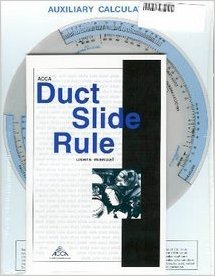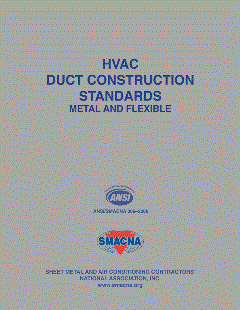
A rule requiring all nonweatherized gas furnaces in the northern region adhere to a minimum 90 percent AFUE standard beginning May 1 will not be immediately enforced.
The U.S. Department of Energy (DOE), in an April 5 statement, declared that enforcement of the rule will not be pursued until the U.S. Court of Appeals rules on a pending lawsuit settlement agreement.
SIGH OF RELIEF
Contracting, distributing, and manufacturing organizations are breathing a collective sigh of relief following the DOE’s announcement to delay the standard.“This is a step in the right direction,” said Charlie McCrudden, vice president for government relations, Air Conditioning Contractors of America (ACCA). “This looming May 1 compliance date has caused a great deal of concern, and this enforcement notice relieves some of that uncertainty.”
According to McCrudden, the DOE has publically endorsed the pending settlement agreement, which would vacate or rescind the portions of the regional standards rulemaking dealing with nonweatherized natural gas and mobile home furnaces, and require the DOE to start over on the rule.
He added that the pending agreement is granting the DOE the chance to delay the rule in a roundabout way.
“In a nutshell, the DOE couldn’t just rescind the rule themselves - they couldn’t just come out and say that we’re not going to enforce the rule, so they tied their enforcement to the settlement,” he said.
Jon Melchi, director of government affairs, Heating, Air-conditioning & Refrigeration Distributors International (HARDI) expressed lukewarm appreciation toward DOE’s enforcement delay.
“Our members were relieved to see this letter,” he said. “But, this relief is temporary and it’s about four months late. We have members who have lost business because of this and all the blame falls on the DOE. If they truly support this settlement agreement, and they were absolutely ready to move on it, this delay should have been implemented months ago.”
David B. Calabrese, general counsel and senior vice president of policy, Air-Conditioning, Heating & Refrigeration Institute (AHRI) said his organization is pleased with the DOE’s decision, but hoped for a little more.
“We’re very happy with it,” he said. “Our top priority would be that the DOE delay the effective date of the standard. However, they’ve opted for this non-enforcement guidance, which is a vow not to enforce the rule.”
PLAYING BY THE RULES?
While the DOE has vowed to temporarily refrain from regional standards enforcement, industry leaders are questioning exactly what this enforcement policy entails.The DOE was, by statute, required to complete a rulemaking settling the enforcement plan for the regional standards rule by Jan. 25, 2013 - no later than 15 months from the issuance of the final rule, issued Oct. 25, 2011.
The Jan. 25 deadline has since passed, with no mention of an enforcement policy.
“For distributors and contractors, regarding stocking and installation, the enforcement policy - or lack thereof - is extremely problematic,” said Melchi. “This missing document simply adds to the continuing uncertainty the industry has endured through this rule making.”
Calabrese said the lack of an enforcement plan is a cause for concern.
“It certainly is a concern of ours, as we have no idea what their plan is regarding enforcement,” he said. “They were supposed to have released this information by now, and, most likely due to the legal proceedings, the document has not been released.”
Melchi said his distributor members recently sent more than 900 emails and letters to Congressional leaders and DOE officials, requesting clarity.
“We’ve been on our leaders for a long time, and, on April 5, we bombarded them with nearly 900 emails, letters, and statements. I don’t believe it’s a coincidence that the same day, the DOE backs off on its enforcement plan,” he said. “Our members sent these letters to blue and red states, stressing over and over why the May 1 date should be delayed. I’m very proud of our membership’s ability to continue to support this cause and drive that message home.”
McCrudden said the back-and-forth essence of the case has compromised contractors’ relationship with homeowners.
“A lot of northern contractors have been informing their customers that if they were considering a change out, it should be done by May 1 to beat the deadline to avoid the possibility of a more costly retrofit,” he said. “Now, following this ruling by the DOE, they have to go back to their customers and inform them that the May 1 deadline is no longer viable. This makes contractors look bad, and, ultimately, this is not the fault of the contractor as they’re at the mercy of the government.”
WHEN WILL IT END?
AHRI representatives filed a motion to “stay,” or suspend the case on March 8. The DOE responded, supporting AHRI’s motion in part, agreeing to a six-month delay in the compliance date; however, DOE opposed AHRI’s request that the stay be linked to the promulgation of the enforcement rule.“It’s very reasonable that the court grant our motion,” said Calabrese. “We believe this is the cleanest way to proceed because the law would be off the books and there would be no concerns about the law or potential enforcement. No one is harmed if this occurs.”
Calabrese continued, “We’re very happy with this latest statement from the DOE, but we feel an immediate stay while the case is being litigated is reasonable. The DOE supports this and there is no industry opposition.”
Melchi agrees, saying, “The entire industry and the DOE support AHRI’s motion to suspend the case. This is indicative that the current state of affairs has put us in an unworkable situation, and its further evidence that HARDI was right from the start to express concern regarding regional standards.”
McCrudden said the growing complexity of the case may have led to its longevity.
“The settlement agreement has evolved into a very complex issue, with lots of legal concerns for the court to wade through,” he said. “Had there been no motions or responses to the settlement agreement, I believe a ruling likely would have been issued by now. But, each motion has to be considered and weighed, making things more and more difficult for the court to decipher.
“I had hoped for a resolution by now, because the longer we wait, the harder it is for a contractor to plan, a distributor to ship, and a manufacturer to create,” he said.
Calabrese said some scenarios may cause the case to stretch into the summer.
“With these proceedings, the court will not give any indication as to when a decision is coming,” he said. “Seeing that there are a number of motions filed, the court may opt to hold an oral argument. If an oral argument is scheduled, this could stretch into the summer.
“However, a decision could come out tomorrow, as well. There just is no way to predict what is coming,” said Calabrese.
Melchi is hopeful that a formal resolution is coming soon, but encouraged industry members not to hold their breath.
“We’re playing the waiting game,” he said. “We don’t know how the court will rule, or when they will rule, but we’re all very interested to see exactly how this thing plays out, and we all hope it ends sooner than later.”
SIDEBAR: Regional Standards Timeline
• Dec. 19, 2007 -President George W. Bush signs the Energy Independence and Security Act of 2007 (EISA) into law. The legislation provides Bush the authority to establish regional standards for residential furnaces and central air conditioning equipment. http://bit.ly/YkmTzv• Oct. 13, 2009 -A group of HVACR manufacturers and energy efficiency advocates signed a consensus agreement designed to improve regional energy-efficiency standards and building codes. The signatories, including Air-Conditioning, Heating & Refrigeration Institute (AHRI), Alliance to Save Energy, American Council for an Energy-Efficient Economy, and more than a dozen HVACR manufacturers, proposed that the standards could save consumers as much as $13 billion in energy costs by 2030. http://bit.ly/Ykq0aF
• Jan. 15, 2010 -AHRI and efficiency advocates officially submit their regional standards consensus agreements to DOE. http://1.usa.gov/153MOOR
• March 11, 2010 -DOE publishes a rulemaking analysis plan, requesting recommendations from stakeholders. Numerous parties begin to provide affirmation and opposition to the consensus agreement. http://1.usa.gov/17qWTor
• June 27, 2011 -The Department of Energy (DOE) opens the public comment period on its regional standards rulemaking, accepting statements through Oct. 17, 2011. http://1.usa.gov/XsnWfa
• Oct. 25, 2011 -The DOE adopts its regional standards, dividing the country into three regions (North, South, and Southwest), with the minimum efficiency standards for equipment varying by type and area. The new rules for nonweatherized furnaces will become effective May 1, 2013; and for weatherized furnaces, central air conditioners, and heat pumps, Jan. 1, 2015. http://bit.ly/14bICgD
• Dec. 23, 2011 -The American Public Gas Association (APGA) filed an appeal of the regional standards rule in the U.S. court of Appeals for the D.C. circuit. APGA argued that the DOE erred in using the direct final rule process in the context of the case in issuing a rule that bans the noncondensing furnace in the northern region and in adopting a new standard that will cause fuel switching, which is without economic justification. In challenging the rule, AGPA asked the court to vacate the rule and remand it for a clean round of notice and comment rulemaking.
• June 6, 2012 -The Federal Trade Commission (FTC) releases a notice of proposed rulemaking (NOPR) on an updated version of its yellow Energy Guide labels. The labels provide efficiency data and were heralded by many in the industry as a potential regional-standards enforcement tool. http://bit.ly/Xsruy2
• July 30, 2012 -As uncertainty continues to mount regarding the standards’ future, AHRI formally petitions the DOE for an 18-month extension for residential nonweatherized gas furnaces from the May 1, 2013 implementation date. AHRI’s request would have delayed compliance to Nov. 1, 2014. http://bit.ly/QJLY1z
• Jan. 11, 2013 -After several months of mediation, the APGA and DOE filed a joint motion to vacate and remand the rule setting new standards for nonweatherized natural gas furnaces. The pending settlement agreement, if accepted by the court, would rescind the furnace portion of the rule and eliminate the May 1, 2013 implementation date. DOE would remand the rule for a further notice and comment period. http://bit.ly/YLuIO6
• Jan. 25, 2013 -Heating, Air-conditioning, and Refrigeration Distributors International (HARDI) filed a motion to continue the regional standards case, substituting themselves in as the petitioner in place of APGA. HARDI argued that by continuing the case, they hoped to rescind the central air conditioner and heat pump standards, in addition to the furnace standard. http://bit.ly/XsrnSX
• Feb. 7, 2013 -AHRI filed a motion in opposition of HARDI’s request to substitute as a petitioner, claiming that HARDI’s request came outside its legal window of opportunity. Additionally, the DOE claims that if HARDI’s motion is accepted, they’ll withdraw their support for the pending settlement agreement, thus threatening the reinstatement of a potential May 1, 2013 implementation date. http://bit.ly/12Kmd5j
• March 8, 2013 -AHRI files a request to stay the case. http://bit.ly/XssaTT
• April 5, 2013 -DOE releases a statement that declares they will not begin enforcing the regional standards mandates until the court rules on the pending settlement agreement. http://1.usa.gov/12KnR6V








